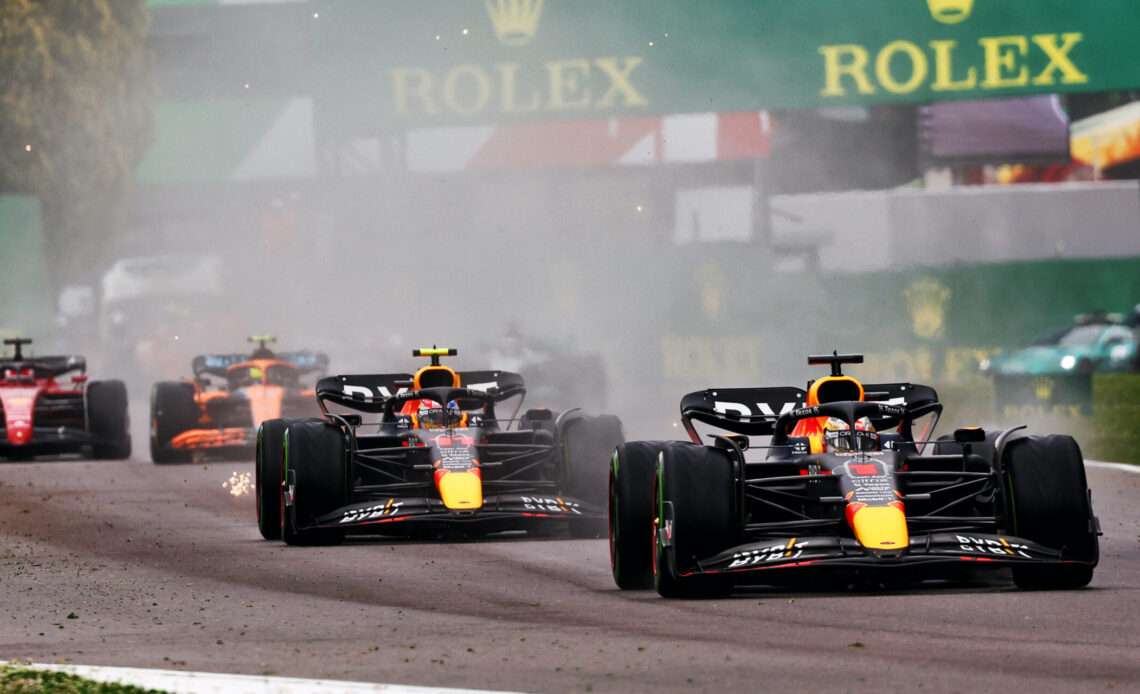At the start of the 2022 F1 season, the “porpoise effect” has undoubtedly been one of the main protagonists. This effect, which has been known since the 1970s and 1980s in cars with ground effect, is characterised by a chassis oscillation when the car travels at high speed. In this situation, the downforce generated by the ground effect is so high that it sucks the bottom of the car to the ground. As it approaches the track, downforce increases, but it reaches a point where there is a sudden loss of downforce and the suspension springs push the chassis back up. Again, the floor generates a lot of downforce and the car is pushed down once more. This behaviour is repeated cyclically, producing an oscillation known as the “porpoise effect” (or simply “porpoising”).
Suspension model
Figure 1 – Quarter-car suspension model
To simulate this effect, the quarter-car suspension model shown in Figure 1 is used. It is assumed that the model is linear and that there is no tyre damping. The sprung mass is ms and the unsprung mass is mu. Zs, Zu and Zrare the positions of the sprung mass, the unsprung mass and the road, respectively. DWF is the downforce generated by the vehicle. The suspension spring stiffness and tyre rates are Ks and Kt, respectively. And Cs represents the damper rate.
Case 1: Simulating with a traditional aerodynamic model
Figure 2 represents the Simulink model of the complete system (case 1). The total DWF (DWF_total) generated by the vehicle has been divided into two blocks. The first one (upper downforce) represents a non-linear model in which the DWF (DWF_upper) is proportional to the square of the speed. The second one (floor downforce)is a simplified aero map representing the DWF generated by the vehicle floor (DWF_floor) as a function of the ride height (RH). As RH decreases, DWF_floor becomes larger, up to a point (RHpeak) where it reaches a maximum (DWFpeak). Below this point, the bottom of the vehicle begins to rapidly lose its…
Click Here to Read the Full Original Article at Racecar Engineering…

